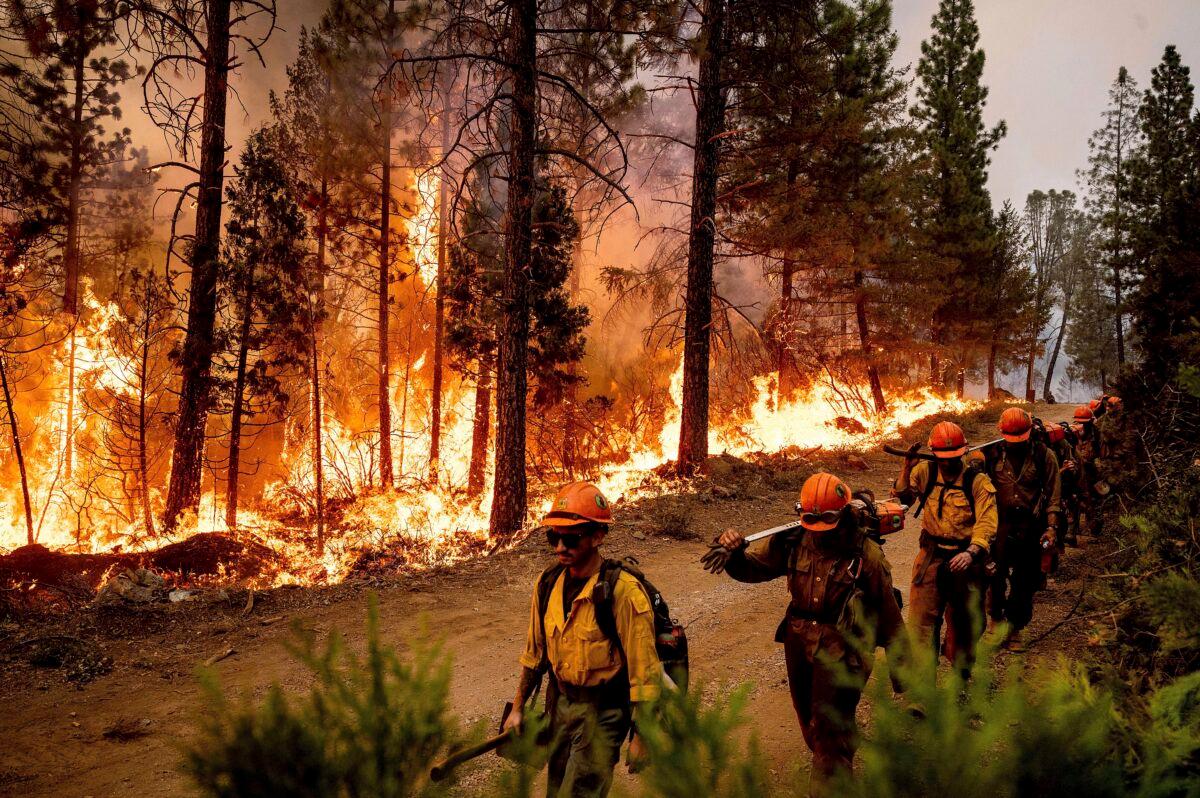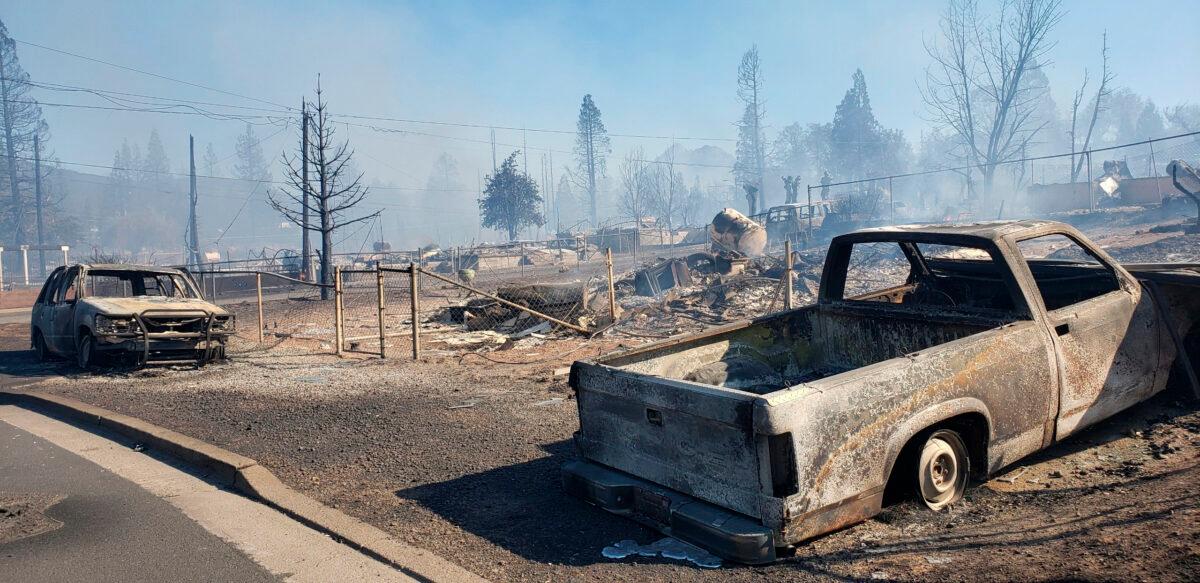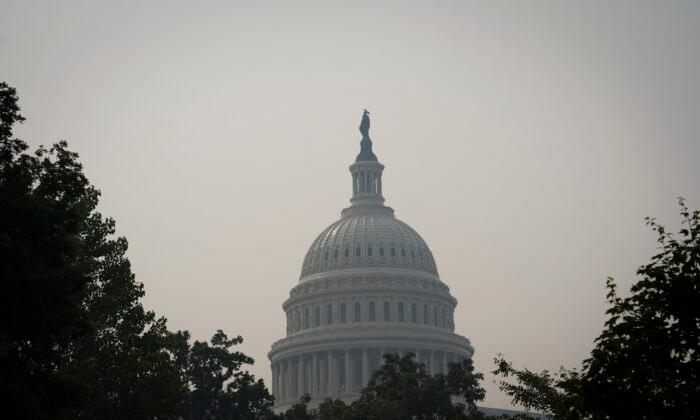With smoke from Canadian wildfires blanketing the U.S. Capitol and an active wildfire season predicted for 2023, Sen. James Risch (R-Idaho) said the United States may have become a victim of its own ingenuity.
“We’re getting a lot better at [fighting fires]. We thought that if you suppress fires, that’s the end of it, but that’s not the end of it,” Risch said. “We’ve caused the problem that we’ve got.”
Sen. Joe Manchin (D-W.Va.) said climate change, advancements in firefighting, and neglected forestry management are taking a toll.
He said smoke is common in the western United States. Manchin noted studies have shown that wildfire smoke makes up 30 percent of particulate matter in the air in some western states. Over half of the most destructive fires in U.S. history have occurred since 2018.
“We have essentially created a perfect storm. With each passing year, we slip further behind,” Manchin said.

According to foresters and government officials, the focus on dousing flames ignores how present fires can prevent future fires. In addition, there needs to be more support for the people who control and, when necessary, put out fires.
Jaelith Hall-Rivera is deputy chief of state, private, and tribal forestry for the U.S. Department of Agriculture. During a June 8 hearing, she told the Senate Energy and Natural Resources Committee, which Manchin chairs, that the situation is becoming dire.
“Wildfire risks have reached crisis proportions,” she said.
Kelly Norris, interim state forester for the Wyoming State Forestry Division, said that state, local and federal agencies must work together to manage property adequately. This means removing brush, dead wood, and other fuel for wildfires while leaving adequate trees, plants, and water systems to promote wildlife and a healthy environment.
“We need to address how we manage our forests by making investments in them,” Norris said.

These investments include mechanical forestry management—clearing undergrowth, brush, and other potential fuel—and prescribed burning. This would prevent the kind of catastrophic wildfires that have plagued the U.S. in recent years. Previous management efforts have been stymied, committee members said.
Sen. Steve Daines (R-Mont.) said the so-called “Cottonwood decision” has made it almost impossible to do the work needed to prevent wildfires in his state.
The ruling by the 9th Circuit Court of Appeals, named for the Cottonwood Environmental Law Center of Bozeman, Montana, requires the U.S. Forestry Service to review all management plans and consult with the U.S. Fish and Wildlife Service whenever a new species is listed under the Endangered Species Act, when a new critical habitat is designated, or when further information about a listed species is found.
Daines said Congress needs to pass laws to prevent “frivolous” lawsuits.
Facing a Pay Cliff
Jeffrey Rupert, director of the Office of Wildland Fire for the U.S. Department of the Interior, said temporary pay raises for federal wildland firefighters have helped. Still, the money for those raises will run out in September.“We’re facing a pay cliff,” Rupert said.
According to Rupert, recruiting new firefighters will become almost impossible if something isn’t done. Cardell Johnson, director of natural resources and environment for the U.S. Government Accountability Office, verified Rupert’s concerns.
Johnson said the top four reasons firefighters quit are low pay, poor work-life balance, high living costs at remote duty stations, and few advancement opportunities. Johnson said a pay raise would go a long way toward addressing the firefighters’ concerns.
Could Lose Half of Firefighters
Hall-Rivera said that if pay concerns are not addressed, the Department of the Interior stands to lose 30 to 50 percent of its firefighters.Manchin said it only makes sense for Congress to make the pay raises permanent because the government is already paying it indirectly. He pointed out that many firefighters quit to take higher-paying positions with private contractors. In turn, when the federal government needs assistance, it hires those contractors, in effect paying the firefighters’ increased salary.
Hall-Rivera and Rupert confirmed Manchin’s take. Hall-Rivera said it would take about $569 million to cover pay increases, better physical and mental health care, and housing costs.
“We would need Congress to pass special legislation. These efforts will help us address our long-term recruiting challenges,” Hall-Rivera said.





